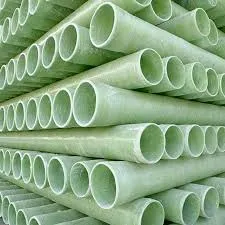
-
 Afrikaans
Afrikaans -
 Albanian
Albanian -
 Amharic
Amharic -
 Arabic
Arabic -
 Armenian
Armenian -
 Azerbaijani
Azerbaijani -
 Basque
Basque -
 Belarusian
Belarusian -
 Bengali
Bengali -
 Bosnian
Bosnian -
 Bulgarian
Bulgarian -
 Catalan
Catalan -
 Cebuano
Cebuano -
 China
China -
 China (Taiwan)
China (Taiwan) -
 Corsican
Corsican -
 Croatian
Croatian -
 Czech
Czech -
 Danish
Danish -
 Dutch
Dutch -
 English
English -
 Esperanto
Esperanto -
 Estonian
Estonian -
 Finnish
Finnish -
 French
French -
 Frisian
Frisian -
 Galician
Galician -
 Georgian
Georgian -
 German
German -
 Greek
Greek -
 Gujarati
Gujarati -
 Haitian Creole
Haitian Creole -
 hausa
hausa -
 hawaiian
hawaiian -
 Hebrew
Hebrew -
 Hindi
Hindi -
 Miao
Miao -
 Hungarian
Hungarian -
 Icelandic
Icelandic -
 igbo
igbo -
 Indonesian
Indonesian -
 irish
irish -
 Italian
Italian -
 Japanese
Japanese -
 Javanese
Javanese -
 Kannada
Kannada -
 kazakh
kazakh -
 Khmer
Khmer -
 Rwandese
Rwandese -
 Korean
Korean -
 Kurdish
Kurdish -
 Kyrgyz
Kyrgyz -
 Lao
Lao -
 Latin
Latin -
 Latvian
Latvian -
 Lithuanian
Lithuanian -
 Luxembourgish
Luxembourgish -
 Macedonian
Macedonian -
 Malgashi
Malgashi -
 Malay
Malay -
 Malayalam
Malayalam -
 Maltese
Maltese -
 Maori
Maori -
 Marathi
Marathi -
 Mongolian
Mongolian -
 Myanmar
Myanmar -
 Nepali
Nepali -
 Norwegian
Norwegian -
 Norwegian
Norwegian -
 Occitan
Occitan -
 Pashto
Pashto -
 Persian
Persian -
 Polish
Polish -
 Portuguese
Portuguese -
 Punjabi
Punjabi -
 Romanian
Romanian -
 Russian
Russian -
 Samoan
Samoan -
 Scottish Gaelic
Scottish Gaelic -
 Serbian
Serbian -
 Sesotho
Sesotho -
 Shona
Shona -
 Sindhi
Sindhi -
 Sinhala
Sinhala -
 Slovak
Slovak -
 Slovenian
Slovenian -
 Somali
Somali -
 Spanish
Spanish -
 Sundanese
Sundanese -
 Swahili
Swahili -
 Swedish
Swedish -
 Tagalog
Tagalog -
 Tajik
Tajik -
 Tamil
Tamil -
 Tatar
Tatar -
 Telugu
Telugu -
 Thai
Thai -
 Turkish
Turkish -
 Turkmen
Turkmen -
 Ukrainian
Ukrainian -
 Urdu
Urdu -
 Uighur
Uighur -
 Uzbek
Uzbek -
 Vietnamese
Vietnamese -
 Welsh
Welsh -
 Bantu
Bantu -
 Yiddish
Yiddish -
 Yoruba
Yoruba -
 Zulu
Zulu
frp cover
Understanding FRP Cover Benefits and Applications
Fiber Reinforced Polymer (FRP) is a composite material made from a polymer matrix reinforced with fibers. It has gained significant attention and application in various industries due to its outstanding mechanical properties, lightweight nature, and resistance to environmental degradation. One of the most notable applications of FRP is in the construction and civil engineering sectors, particularly as a cover for structures. This article will explore the various aspects of FRP cover, its advantages, applications, and its role in modern construction practices.
What is FRP Cover?
FRP cover refers to the use of fiber-reinforced polymer materials as protective shielding over various structures, components, or systems. These covers can be applied to concrete, steel, or even wooden structures to enhance their durability and longevity. The unique properties of FRP, such as high tensile strength and low weight, make them ideal for use in environments that challenge traditional materials.
Advantages of FRP Cover
1. Corrosion Resistance One of the standout features of FRP materials is their resistance to corrosion. Unlike traditional materials such as steel, which can rust and degrade when exposed to moisture and chemicals, FRP maintains its structural integrity over time. This property makes FRP covers an excellent choice for applications in marine environments, chemical plants, and wastewater treatment facilities.
2. Weight Reduction FRP is significantly lighter than metal and concrete, allowing for easier installation and reduced structural loads. This weight reduction not only simplifies transportation and installation but can also lead to cost savings in the overall construction process.
3. Design Flexibility The versatility of FRP materials enables architects and engineers to design complex shapes and structures that may not be feasible with conventional materials. This design flexibility allows for innovative solutions to modern architectural challenges.
4. Thermal and Electrical Insulation FRP materials possess excellent thermal and electrical insulation properties. This makes FRP covers suitable for protecting sensitive equipment and structures from temperature fluctuations and electrical interference.
frp cover

5. Low Maintenance Structures covered with FRP require considerably less maintenance compared to traditional materials. Its inherent properties mean fewer repairs and replacements over time, translating to lower lifecycle costs.
Applications of FRP Cover
1. Bridges and Infrastructure FRP covers have found a critical role in the maintenance and rehabilitation of bridges and other infrastructural elements. By applying FRP wraps to existing concrete or steel elements, engineers can enhance their load-bearing capacity and extend their service life without the need for extensive reconstruction.
2. Garage and Car Parks In parking structures, FRP covers are utilized to protect concrete from the damaging effects of de-icing salts and moisture. By preventing water infiltration and corrosion, FRP helps maintain the structural integrity and aesthetic appearance of these facilities.
3. Marine Structures The marine environment poses a constant threat of corrosion to materials. FRP covers used in docks, piers, and other marine installations offer unparalleled protection against saltwater and other corrosive elements, significantly reducing maintenance costs over time.
4. Industrial Facilities In chemical plants and refineries, FRP covers protect critical components that are exposed to harsh chemicals and extreme conditions. This ensures operational efficiency and prevents costly downtimes associated with material failures.
5. Cultural Heritage Conservation FRP covers are increasingly being used in the preservation of historical structures. Their lightweight nature and ability to conform to complex geometries allow for non-invasive restoration efforts that do not compromise the integrity of the original materials.
Conclusion
The use of FRP covers in construction and maintenance offers numerous benefits that align with the needs of modern engineering practices. Their lightweight nature, corrosion resistance, and design flexibility make them a valuable asset in a variety of applications. As technology continues to evolve, the potential for FRP materials in enhancing structural performance and longevity will likely expand, leading to even more innovative solutions in the construction industry. In a world increasingly focused on sustainability and cost-effective solutions, FRP covers stand out as an exceptional choice for the future of infrastructure.









